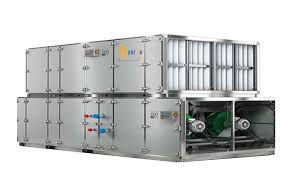Transforming Your Office Workspace Interior Design for Maximum Productivity
- cyruscrafts shop
- Jan 25
- 3 min read
How we design our workspaces is crucial in fostering productivity, creativity, and employee satisfaction. An effective office workspace interior design not only enhances the aesthetic appeal of the office but also directly influences the performance and well-being of its occupants. Whether designing a home office or revamping a corporate space, incorporating smart design elements can make a significant difference.
Transforming Your Office Workspace Interior Design for Maximum Productivity
One of the most impactful elements in any office workspace interior design is natural light. Studies have shown that exposure to daylight improves mood, energy levels, and overall productivity. Ensure that desks and workstations are positioned near windows to maximize natural light exposure. If your space lacks sufficient windows, consider adding skylights or using light-enhancing design tricks like mirrors and light-colored walls.

Ergonomic Furniture for Better Health
Investing in ergonomic furniture is essential for employee health and comfort. Adjustable desks, supportive chairs, and properly placed computer monitors reduce the risk of strain and injury. A well-thought-out office workspace interior design always prioritizes ergonomics to create a more comfortable and efficient environment.
Incorporating Greenery
Adding plants to your office can significantly improve air quality and create a calming atmosphere. Vertical gardens, potted plants, or even small succulents on desks are excellent options. Greenery not only makes the space more inviting but also boosts focus and creativity.
Open vs. Private Spaces
While open-plan offices encourage collaboration, they can sometimes be noisy and distracting. A balanced office workspace interior design should include both open areas for teamwork and private spaces for focused work. Acoustic panels, movable partitions, and soundproof rooms can help achieve this balance.

Utilizing Color Psychology
Colors have a profound impact on mood and productivity. Shades of blue and green are known to enhance focus and calmness, while yellow can stimulate creativity. Incorporate these colors into wall paints, furniture, or decor to create an inspiring workspace.
Technology Integration
Modern workspaces rely heavily on technology, so seamless integration is key. Ensure that the office design includes sufficient outlets, cable management systems, and areas for charging devices. Smart technology, like automated lighting and climate control, can further enhance convenience and energy efficiency.
Personalized Touches
Allowing employees to personalize their workspaces fosters a sense of ownership and belonging. Encourage them to add family photos, artwork, or other small items that make their desks feel like home. A well-personalized office workspace interior design contributes to higher morale and job satisfaction.
Flexible Layouts for Dynamic Needs
The needs of an office can evolve over time, so flexibility in design is crucial. Modular furniture, reconfigurable layouts, and multipurpose spaces ensure that the office can adapt to changing requirements. This approach also supports hybrid work models, where employees alternate between working from home and the office.
Wellness Areas
Including wellness areas in the office is another trend gaining traction. Quiet zones for meditation, relaxation rooms, or fitness corners contribute to employee well-being. These spaces provide a much-needed break from work and help reduce stress levels.
Incorporating Art and Creativity
Art can breathe life into an office space, making it more vibrant and inspiring. Murals, framed artwork, or even sculptures can stimulate creativity and give the office a unique personality. Choose pieces that align with the company’s culture and values for a cohesive look.
Storage Solutions for Organization
Clutter can be a significant source of distraction in any workspace. Integrated storage solutions, such as built-in shelves, cabinets, and desk organizers, ensure that everything has its place. A clutter-free environment promotes mental clarity and allows employees to focus better on their tasks.
Breakout Spaces for Collaboration
Collaborative areas equipped with comfortable seating, whiteboards, and tech tools encourage brainstorming and teamwork. These spaces should be designed to inspire creativity and innovation, making them an essential part of any modern office workspace interior design.
Sustainability in Design
Sustainable design practices not only benefit the environment but also create a healthier workplace. Use eco-friendly materials, energy-efficient lighting, and renewable energy sources wherever possible. Employees are increasingly drawn to companies that prioritize sustainability, making it a worthwhile investment.
Smart Use of Space
Maximizing space utilization is especially important in smaller offices. Multi-functional furniture, wall-mounted desks, and under-desk storage can help you make the most of limited square footage. Even in larger offices, efficient use of space ensures a more organized and streamlined environment.
Encouraging Movement
Sedentary lifestyles can lead to health issues and decreased productivity. Encourage movement by incorporating standing desks, walking tracks, or even in-office fitness challenges. Movement-friendly designs keep employees active and energized throughout the day.
Conclusion
Creating an effective office workspace interior design involves more than just choosing stylish furniture or decor. It’s about crafting an environment that supports productivity, creativity, and well-being. By focusing on elements like natural light, ergonomic furniture, greenery, and personalized touches, you can transform your office into a space where employees thrive. Whether starting from scratch or renovating an existing setup, thoughtful design choices can make all the difference. A well-designed office not only reflects the company’s brand but also creates a space where innovation and success can flourish.



Comments